Vicodin addiction can rob you of your health, your dignity, and your hope for a better tomorrow. At Blue Ridge Mountain Recovery Center, you will reconnect with your best self, and begin to build the foundation for a more promising future.
What is Vicodin Abuse
Learn More About Vicodin Abuse
Vicodin, which is a combination of hydrocodone and acetaminophen, is used for the relief of moderate to severe pain. Hydrocodone is a strong opioid painkiller, while acetaminophen is a much milder non-steroid painkiller. While hydrocodone is the addictive substance in Vicodin, acetaminophen can be dangerous because taking more than recommended can cause liver damage.
By blocking the pain receptors in the brain Vicodin not only relieves pain, but creates a feeling of euphoria and relaxation causing this medication to be highly addictive. Over a period of time an individual develops a tolerance, requiring more and more of the substance in order to achieve the same feelings they initially experienced. Vicodin addicts have been known to take anywhere from 20 to 30 pills a day.
Since Vicodin is a central nervous system depressant, it naturally decreases heart rate and respiration. The abuse of Vicodin can be deadly due to the risk of overdose, especially if you are combining it with another central nervous depressant like alcohol. If too much Vicodin is consumed the heart rate can slow down to the point of death. The longer Vicodin is abused, the more negative side effects an individual is likely to obtain. Individuals who abuse Vicodin tend to have negative medical issues, problems with social relationships, and often issues with work or school.
Statistics
Statistics on Vicodin Abuse
Vicodin has become one of the most notorious painkillers abused. With the relatively easy access, the medication the abuse rate has almost quadrupled within the past 10 years. It is estimated that nearly 2 million individuals across the United States suffer from Vicodin addiction.
Causes
Causes of Vicodin Abuse & Addiction
While research about addiction is ongoing, it’s generally accepted that addiction is a multi-factorial problem that involves many factors, including:
Genetic: Many research studies have shown that individuals with family members suffering from addiction problems are at a high risk for developing an addiction themselves. This suggests that a genetic component passed on through family members may be directly related to the cause of a substance addiction.
Brain Chemistry: Another theory is that the brain chemistry of addicts may be lacking in certain neurotransmitters that are responsible for happiness and pleasure. When an individual takes a substance like Vicodin they get a sense of pleasure that is not naturally produced, so they continue to use that substance to make up for any brain chemical defects.
Environmental: Children who grow up in an environment surrounded by addiction may come to believe that drug use is acceptable. This can cause them to be more likely to use later on in life due to being desensitized to drug abuse. Additionally, environmental stressors may cause an individual to turn to drug abuse in order to help cope with some of the emotional and physical pain.
Co-Occurring Disorders
Co-Occurring Disorders and the Complexity of Vicodin Addiction
Often substance abuse is accompanied by another mental health condition. Some common co-occurring disorders may include:
- Depressive disorders
- Conduct disorders
- Anxiety disorder
- Other substance abuse disorders
- Post-traumatic stress disorder
- Bipolar disorder
- Schizophrenia
Signs & Symptoms
Signs and Symptoms of Vicodin Abuse
The symptoms of Vicodin abuse from an addict vary by the individual and how long the substance has been abused. Some common signs and symptoms of Vicodin use and abuse include:
Psychological/Mood symptoms:
- Euphoria
- Anxiety
- Severe mood swings
- Fear
- Confusion
- Obsession with obtaining more Vicodin
- Inability to focus
- Hallucinations
- Delusions
- Memory problems
Behavioral symptoms:
- Doctor shopping
- Going through prescriptions too quickly
- Repeated reports of lost prescription or of it being stolen
- Secluded behavior
- Lying, stealing, dishonest behavior
Physical symptoms:
- Drowsiness
- Nausea and vomiting
- Itching
- Swelling
- Weakness
- Dizziness
- Slow heartbeat
- Lightheadedness
- Convulsions
- Seizures
- Headache
- Ringing in the ears
- Constipation
- Constricted pupils
Effects
Effects of Vicodin Addiction
- Liver damage or failure
- Jaundice
- Urinary system issues
- Overdose
- Relationship problems
- Financial issues
- Trouble with work or school
- Social isolation
- Seizure
- Coma
- Death
Withdrawal
Withdrawal Symptoms of Vicodin Addiction
The effects of withdrawal from Vicodin can set in after the amount of the substance is reduced even slightly or if there is a longer period of time before taking the next dose. With the unpleasant side effects of withdrawal many addicts are afraid to start the recovery process. Typical withdrawal symptoms include:
- Intense craving for hydrocodone
- Diarrhea
- Insomnia
- Depression
- Dilated pupils
- Intense sweating
- Runny nose
- Chills
- Agitation
- Irritability













